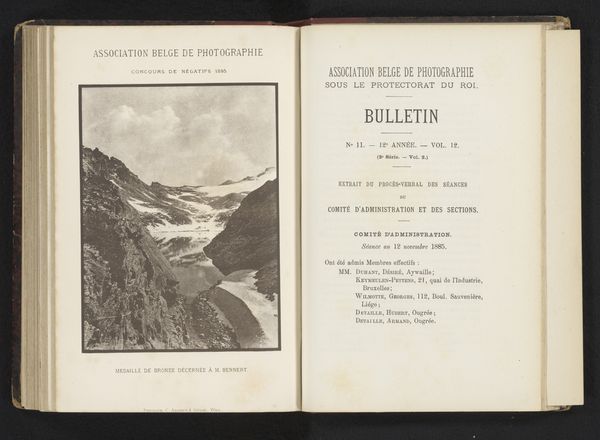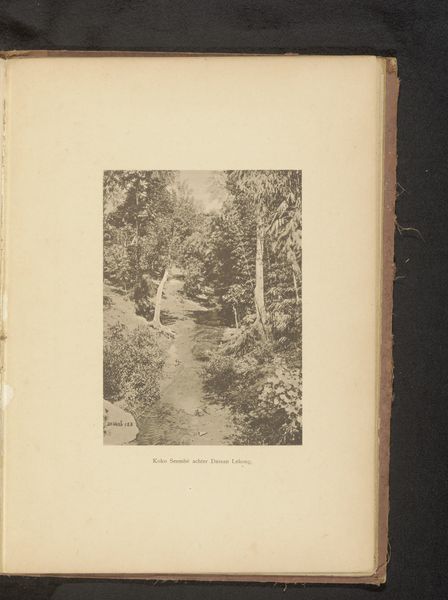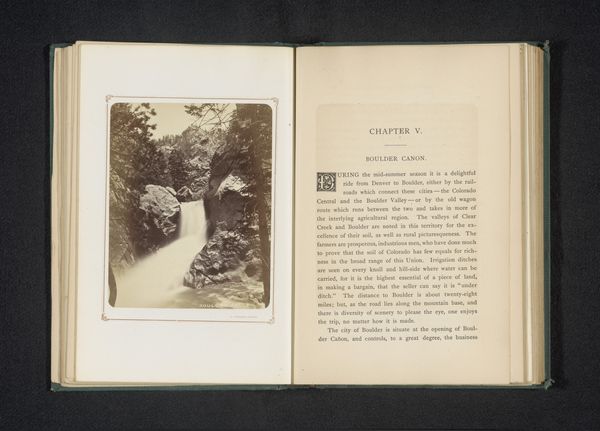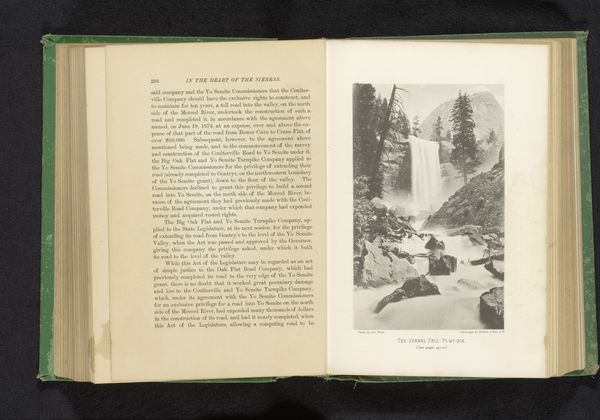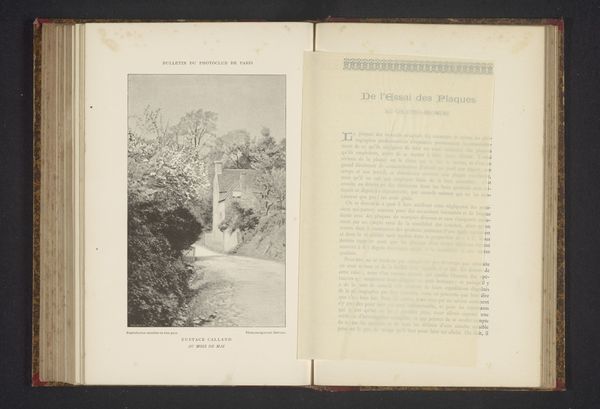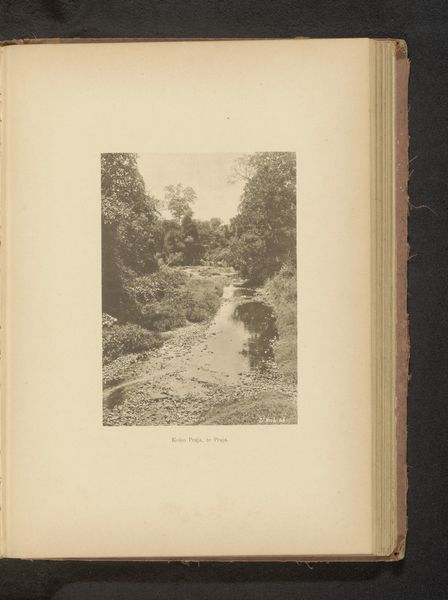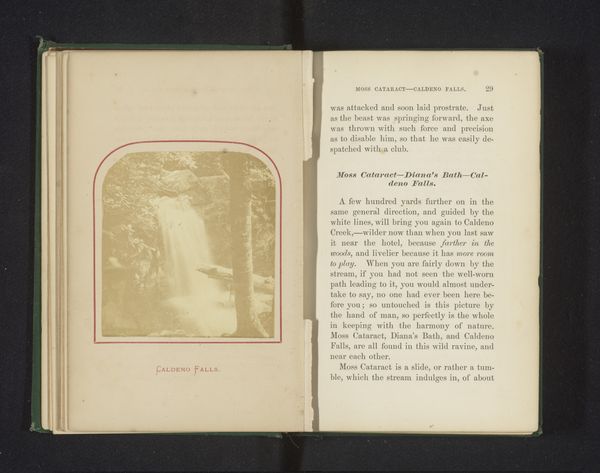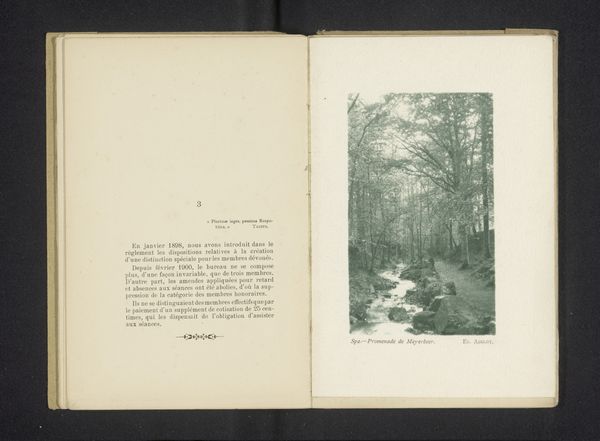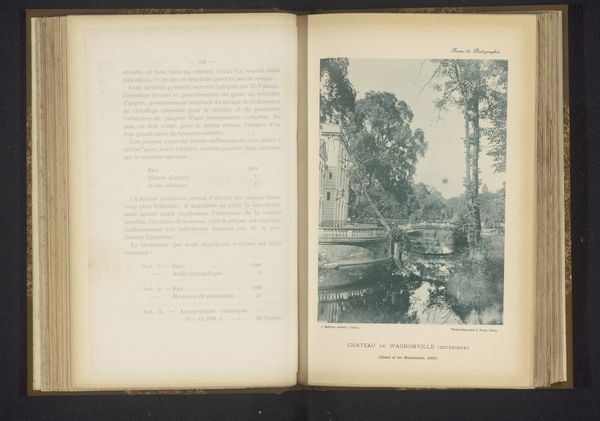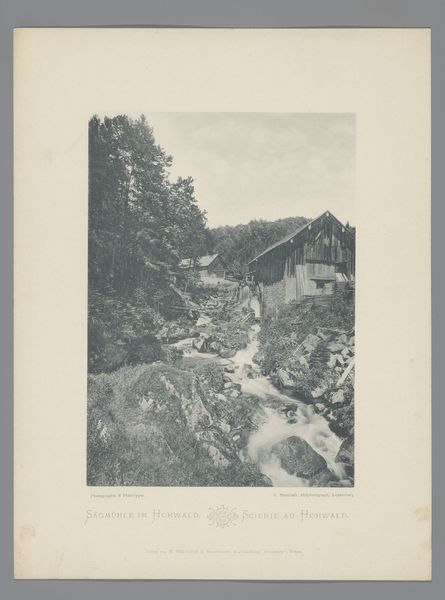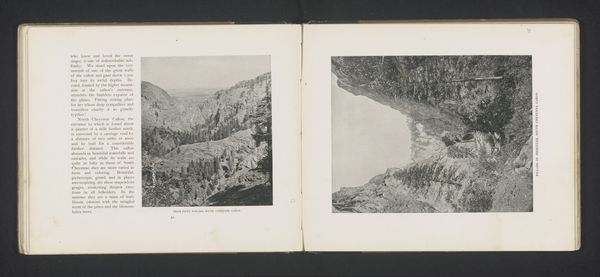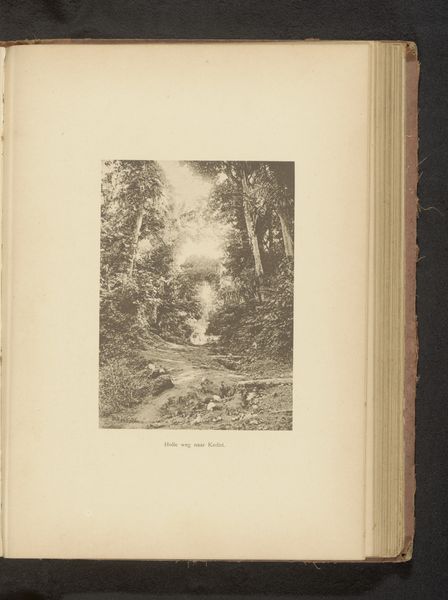
print, photography, gelatin-silver-print
# print
#
landscape
#
photography
#
gelatin-silver-print
Dimensions: height 170 mm, width 120 mm
Copyright: Rijks Museum: Open Domain
Editor: We're looking at Alphonse Leirens' gelatin-silver print, "Rotspartijen in het dal van de Tamina, Zwitserland," likely from between 1886 and 1889. It’s presented within the pages of what seems to be a photography journal. It strikes me as quite a study of textures – the rushing water against the craggy rocks. What stands out to you? Curator: What interests me here is considering the photograph within the context of its production and intended use. It's a gelatin-silver print, a process reliant on industrial advancements. We must remember that mass media and photographic technology facilitated a specific kind of colonial gaze that transformed far-off locales, making them palatable for the leisure classes, but were made possible through intense factory labor. This was awarded the bronze medal in a contest – so what does this tell us? Editor: You’re saying its value is connected to its place in mass production? Curator: Precisely. The photographic process itself – the chemistry, the paper production, the very act of capturing and disseminating this image – reflects an intricate web of labor and resource extraction. Photography isn’t some pure representation of nature but is an industrially produced object that participated in shaping the modern consciousness of a landscape like this. Where did the gelatin come from? What was its quality? What techniques were employed? These questions speak volumes about artistic intent and wider consumption practices of the time. Editor: So it's less about the romantic landscape and more about...the means by which the landscape came to us? Curator: Exactly. And how that process relates to and reflects on socio-economic changes. This landscape image only exists through human action: the gelatin preparation, and the photo development as the production of images to influence perception and reinforce value of place. Editor: That gives me a lot to consider. Thank you. Curator: Indeed. Hopefully, you'll consider gelatin-silver prints from now on with questions on process, provenance, labor, and use, seeing images not just as art, but as social products of their time.
Comments
No comments
Be the first to comment and join the conversation on the ultimate creative platform.
